Does Girdle Finishing (Faceted-Polished-Bruted) Matter?
There are basically 3 types of girdle finishing you can find in diamonds: faceted, polished and bruted.
Interestingly, the type of girdle finishing has no effect on the brilliance or optical performance of a diamond. If you had read up our entire section on cut, you would know that brilliance is largely determined by factors like cut proportions (e.g. pavilion angles, crown angles, table size, girdle thickness etc…).
So, if girdle finishing doesn’t affect the sparkle of a diamond, why would it matter if it was faceted, polished or bruted? In this article, we will find out how the various finishings look like and what are the things you should look out for.
What is a Bruted Girdle Finishing?
Just a few decades ago, almost all round brilliant diamonds have a bruted girdle because of the way diamonds were cut. This frosty appearance is created when a rough stone is rounded against another rough stone in a process called bruting.
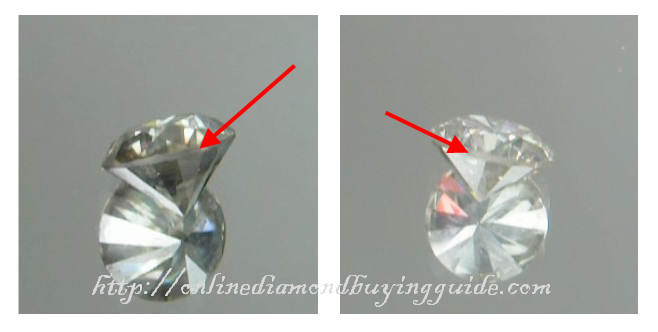
A bruted girdle looks rough and “porous”.
In severe cases of the bruting process, a “bearded girdle” can form and the diamond’s surface resembles the appearance of a man’s beard. On a micro-scale level, the bearded girdle has many tiny feathers which give the diamond an opaque and frosty appearance.
In badly worked diamonds where the girdle is cut too quickly and with too much pressure, the feathers can extend into the diamond’s body and become severe enough to be marked as inclusions.
I would go on the record to say this: having a bruted girdle is no reason for joy because it represents sloppiness in the cutter’s workmanship. This is because subsequent cutting can usually remove the rough, granular surfaces with little loss of weight. Because of this, there’s really no reason for a cutter to leave it in that rough, unfinished state.
Bearded girdles should also be avoided due to the numerous “miniature cracks” around the diamond. This is because there is a likelihood of them growing into larger ones should there be accidental impacts.
What Are Polished And Faceted Girdles?
A polished girdle finishing means that the entire girdle is polished into a single large and clear facet which enables you to see through into the diamond’s body. The surface area of the girdle is smooth and continuous all the way around the perimeter of the diamond.
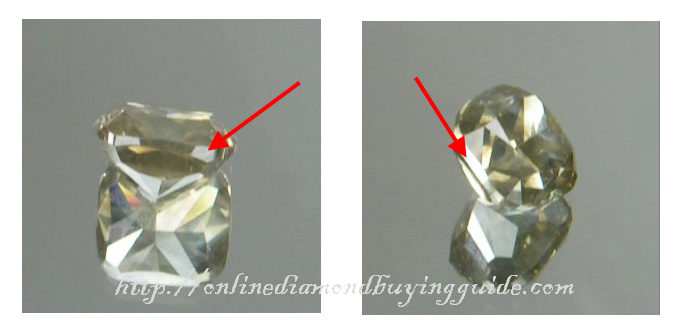
A polished girdle is smooth and reflective.
The most common type of finishing found in modern-day diamonds is the faceted girdle. Basically, a series of very small facets are made around the entire circumference and this faceting process removes tiny feathers caused during the bruting process.
One advantage with a faceted girdle is that it blends in well with the rest of the diamond when light reflects on it.

Here, I want to point out that gemological labs like GIA only evaluate the thickness of the girdle when assessing cut quality and not the appearance of it. The reason why diamond cutters put in additional time and effort for girdle finishing is purely based on the notion that consumers have a preference for it.
What’s My Personal Preference for a Girdle’s Finish?
Personally, I prefer a faceted girdle as it gives a cleaner and more complete look to the diamond.
My wife wears a heart shaped diamond with a slightly thick – thick faceted girdle. Mounted in a prong set basket setting, the diamond is set pretty high and this exposes more areas of the stone to capture and reflect light.
In casual observations from the sides of the ring, you can sometimes see light reflecting off the girdle due to the presence of the tiny facets. To me, that is an added benefit of having faceted girdles.
Here’s the bottom line.
If a diamond you shortlisted for purchase has a bruted girdle, I personally feel that it would be a deal breaker unless you are buying an antique diamond or estate jewelry. The thing is, we are in the 21st century and machining equipment is easily available anywhere in the world.
There is no excuse for a cutter not to touch up the girdle for a more presentable look. Having either a polished or a faceted girdle would be OK but leaving a bruted girdle on a finished product is a sign of sloppiness I cannot cordon.
To wrap things up, I hope you found this write up useful. If you have any questions, feel free to leave a comment below and I will help you out!
Lastly, I’m going to leave you with a couple of stunning diamond engagement rings I recently came across from WhiteFlash.com. If you are interested to find out more, click on the images to get details.
Related Articles
Leave A Comment

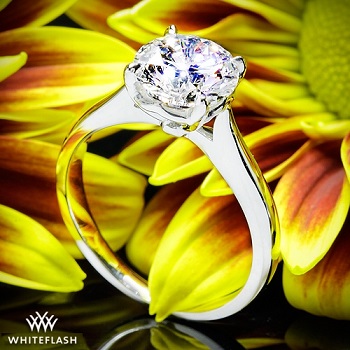
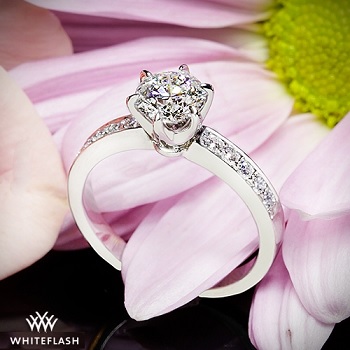
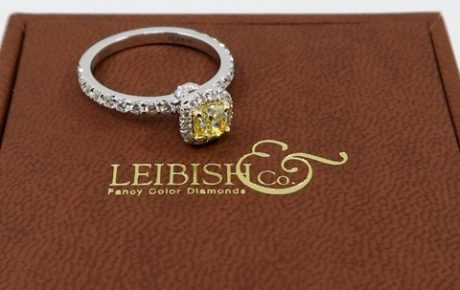
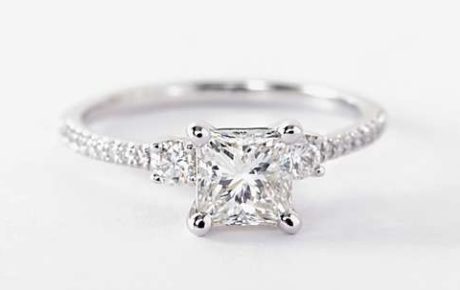
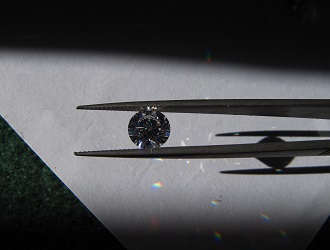










13 Comments
If my cutter polished or faceted the girdles of my old cut diamonds – our specialty – I’d be pretty pissed. It’s definitely not sloppy, its keeping antiques in their purest form. A perfect (and possibly the only) reason to keep a bruted girdle! The bruted girdle displays and silky and waxy lustre on a fine grained surface.
Agreed. If you are talking about old antique diamonds from the last century, it would make sense. In modern day manufacturing, keeping girdles in bruted states is just downright sloppy.
Your comments sound like those of a mind held captive to marketing messages. Very typical of your region and culture. Everything shiny and bling isn’t necessarily better. Your OPINION is subjective, and common.
As everything manufactured becomes computer CNC perfect, these products lose value (become common, predictable, mass produced). The matte girdle is about classic (unique) style. It adds a certain charm in a marketplace of same, same, homogeneity.
Diamonds, gemstones, jewelry, art, fashion are a personal SUBJECTIVE statement. Is a faceted girdle good or bad? It is a subjective opinion.
Your idea of taste (“sloppy”) may be similar to the way Van Gogh was first perceived in art salons (outcast, shunned). As well as so many examples of modern art in their day.
The “perfect” symmetrical cut of the RB today is about as exciting as a mass produced ball bearing. The H&A stars are the classic branding logo indicating you’ve been sucked in by a marketing campaign.
No wonder classic diamonds, cuts, and styles are so popular today. They feel unique, and authentic – not another mass produced product.
Well, it depends on what kind of goods you are looking for. If you are looking for a old style and odd shape diamond, a bruted girdle or unfinished diamond could be your thing and I think it is perfectly fine. If polishing or cut quality didn’t matter, why bother to buy a diamond in the first place? You could easily pick out a rock on the ground and use it.
And just to be clear on one thing (clearly, you have absolutely no idea how things work in the polishing industry). If diamonds were so easily cut “perfectly symmetrical” and the finished product exactly the same as the other, every one would have been doing it.
Reality is far from that.
Anyway, the point I am trying to make here is that the typical consumer buying a diamond in the modern market should be on the lookout for faceted girdles instead of bruted girdles. You want to avoid unpolished diamond girdles in NON-antique style jewelry.
Many thanks for your website :) It only stands proof of your clear and concise writing and explanations.
I contacted Blue Nile via chat and they said they can provide hearts and arrows images for up to 3 diamonds. Let’s see.
I provided them the following 3:
1. Budget choice: https://www.bluenile.com/uk/diamond-details/LD09371530 glad to see you think this is a great choice
2. https://www.bluenile.com/uk/diamond-details/LD09203394 – I noticed at a second look that this one has 60% star facets, your guidelines are 50%-55%, is this a no go ?
3. https://www.bluenile.com/uk/diamond-details/LD09203256
https://www.bluenile.com/uk/diamond-details/LD09335853 – I preferred #256 over this one because this one has 4% girdle thickness, whereas all the rest have 3.5%. I don’t remember any clear value in your specs but I guess 3.5% is better than 4%, since your recommendation is to keep the girdle as close to possible to “medium”.
Interesting thing, I noticed the prices going a bit up each day? So #530 went up from 3288 to 3292 yesterday and again to 3313 today, is this only going up or it can go down as well?
One more question regarding pricing, is there any room for negotiation and if yes how could I tackle this aspect in the best way?
Once again many thanks for your reply and recommendation, I hope it is ok to contact you again if I get the H&A images.
1) 3.5% to 4% is definitely ok. All will work well for girdle thickness in a round cut diamond. Don’t get too caught up here.
2) Prices shouldn’t fluctuate too much. As far as I know, Bluenile is very competitive and as for when they change prices, I think it depends on market forces. Asking me whether prices will go up or down is akin to asking me whether Facebook’s stock will go up or down tomorrow. I actually don’t know. : )
3) You could try asking for a discount. As far as I know, BlueNile will not negotiate. Their prices are competitive to begin with. But if you have any luck, let me know!
https://www.bluenile.com/uk/diamond-details/LD09371530 is a well cut diamond.
https://www.bluenile.com/uk/diamond-details/LD09203394 is OK as well. I won’t let the 60% stars bother me. I can tell you that this is overall, a very well cut diamond.
Let me know again when you can get the data.
Slight twist, asking for just a bit more patience from your side :)
Looking at them again I can see that the arrows pattern on the 0.7ct #394 (right) looks better than on the 0.67ct #530(left). Initially, I did not pay attention to this detail because of the low-resolution photos.
If I interpret the left photo (#530)correctly, I see the 12 o’clock arrow tip slightly off-centered from the arrow body, same as for the 11 and 4 o’clock ones but not so much as the 12.
Overall the right photo (#394) shows a more well defined and consistent arrows pattern.
Side Question: Are the Hearts and Arrows views independent or linked to one another? eg. a stone with nice well-defined arrows pattern can have a poor hearts pattern or is it expected of it to have an equally nice hearts pattern? (I remember reading on your site that the hearts is a bit more relevant than the arrows but I don’t remember reading about this correlation between them)
So, considering this together with the upgrade in Color and Clarity, and a bit in Ct too, I am more and more inclined to squeeze myself of the extra GBP 1000 and go for the (#394).
I guess you turned me into a Cut Nazi too :) because without this aspect of the Arrows view I would probably go for the lower price diamond.
What do you think ? Is the Arrows pattern better for the right image, or the photos are more misleading than they appear?
You are right with your analysis.
And we are being anal here.
https://www.bluenile.com/uk/diamond-details/LD09371530 has one shaft that’s slightly off. From a budget perspective, that’s fine given the great price point this diamond has. This is more of a mind clean issue and doesn’t impact appearance in a big way. I will restate, this is a well cut diamond.
https://www.bluenile.com/uk/diamond-details/LD09203394 has better precision. If money were no object, I would gravitate towards this because I do value color and cut precision.
At the end of day, I would say that you probably can’t tell differences with the naked eye between these 2 diamonds in the face up view when comparing them side by side.
It really depends on what you are comfortable with. Do you have a tight budget or do you need a mind clean factor?
Both stones are good choices.
Nice website. But be sure you get everything correct.
I have been buying and selling diamonds for 45 years. I think your explanation on the girdle should be corrected for your readers. “Bruting” is one of the cutting stages, not the appearance of the girdle. What you are referring to is a frosty girdle which is simply an unpolished part of the stone.”Bearding” leaves noticeable vertical lines on the girdle of a polished/faceted stone when the cutter has applied too much pressure on the diamond. It shows his lack of care and/or skill in cutting. The girdle appearance is simply aesthetics, and as you say, has no affect on the technical cut grade.
Thank you for the feedback and for helping us make the site better. You are right about the technical definition and it was a slip up on my part. I’ve updated the article!
Thank you for the article. I was looking at my GIA diamond certificate and was wondering what does faceted girdle mean and I found the definition here. Seems like everything is normal and I was overly worried about a faceted girdle being something bad or chipped.
Hello. I’m looking at a pre-owned Tiffany .93 round, I color, VS1 that has a brutes finish. Should I forget about this diamond that I’ve already fallen in love with online and look elsewhere? Would love your thoughts? Thanks
A bruted finish is just plain sloppy work done by the cutter. Seriously, there are much better options in the market and I doubt a pre-loved Tiffany ring would offer better value than buying a brand new ring with a super ideal cut diamond as your center stone.